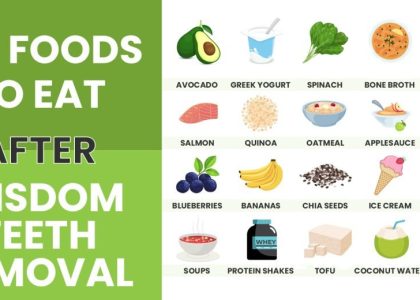Varietas padi C-4 Mentik dan Rojolele merupakan contoh keanekaragaman tingkat yang memperlihatkan kekayaan dan variasi dalam dunia pertanian. Keduanya tidak hanya menawarkan rasa yang unik, tetapi juga adaptasi yang baik terhadap berbagai kondisi lingkungan. Dengan pertumbuhan yang optimal dan hasil panen yang melimpah, varietas ini menunjukkan pentingnya keanekaragaman dalam menjaga ketahanan pangan. Mari kita telusuri lebih dalam tentang sifat dan manfaat yang dimiliki oleh varietas padi ini.
Varietas Padi C-4 Mentik dan Rojolele Merupakan Contoh Keanekaragaman Tingkat
Rice is a staple food for millions around the world, and its diversity is remarkable. Within this realm, the Varietas Padi C-4 Mentik and Rojolele represent significant examples of genetic diversity in rice cultivation. This article delves deep into these two rice varieties, exploring their characteristics, cultivation methods, and their importance in biodiversity.
Understanding Rice Varietas
Before we dive into the specifics of C-4 Mentik and Rojolele, it’s essential to understand what we mean by “rice varietas.”
– **Definition**: A varietas refers to a unique strain of a plant that has distinct characteristics from other strains. In rice, this can mean differences in grain size, shape, taste, and resistance to pests or disease.
– **Importance of Diversity**: Genetic diversity in rice is crucial for food security. Different varieties can thrive in different environmental conditions, resist various diseases, and provide a range of nutrients.
C-4 Mentik Rice: An Overview
C-4 Mentik is a variety known for its unique characteristics and adaptability.
Physical Characteristics
– **Grain Appearance**: C-4 Mentik grains are typically medium-sized, with a slightly elongated shape. They have a glossy finish that enhances their marketability.
– **Color**: The grains are usually white or off-white, which is appealing to consumers.
– **Aroma**: One of the standout features of C-4 Mentik is its pleasant aroma. This quality makes it a favorite for culinary uses, especially in traditional dishes.
Cultivation Techniques
Farmers employ several techniques to cultivate C-4 Mentik effectively:
– **Soil Preparation**: Ensuring the soil is well-prepared for planting is critical. C-4 Mentik thrives in loamy and fertile soils.
– **Water Management**: This variety requires adequate water supply, particularly during the growing season. Farmers often practice wetland farming to maintain moisture levels.
– **Pest Control**: Integrated pest management techniques help protect C-4 Mentik from pests while minimizing chemical usage.
Benefits of C-4 Mentik
The benefits of cultivating C-4 Mentik rice extend beyond its physical attributes:
– **Higher Yield**: This variety tends to yield more grains per plant compared to others, making it economically beneficial for farmers.
– **Disease Resistance**: C-4 Mentik shows good resistance to common rice diseases, reducing the need for chemical pesticides.
– **Market Demand**: Due to its flavor and aroma, this variety often garners higher prices in local markets.
Rojolele Rice: A Unique Variety
Rojolele is another important rice varietas, renowned in agricultural circles for its specific qualities.
Physical Characteristics
– **Grain Size**: Rojolele grains are generally shorter and rounder, making them distinct from C-4 Mentik.
– **Color and Texture**: The grains may have a slightly translucent appearance, giving them a unique visual appeal.
– **Flavor**: Rojolele is celebrated for its rich flavor, often preferred for everyday meals.
Cultivation Practices
To cultivate Rojolele effectively, farmers follow specific practices:
– **Seed Selection**: Choosing high-quality seeds is essential. Farmers often select seeds from healthy plants to ensure quality.
– **Water and Drainage**: Proper water management is critical. Rojolele thrives in well-drained soil to prevent root rot.
– **Fertilization**: Organic fertilizers are often favored to enhance soil fertility and improve crop health.
Benefits of Rojolele
Like C-4 Mentik, Rojolele also offers numerous advantages:
– **Flavor Profile**: Its unique taste makes it popular among consumers, often leading to higher sales.
– **Culinary Versatility**: Rojolele is suitable for various dishes, from rice dishes to desserts.
– **Climate Adaptability**: This variety can adapt to different climatic conditions, making it a reliable choice for farmers in various regions.
The Role of Varietas Padi in Biodiversity
Both C-4 Mentik and Rojolele are prime examples of how varietas padi contribute to biodiversity.
Conservation of Genetic Resources
– **Importance of Genetic Variation**: The genetic variation present in rice varietas is essential for breeding programs aimed at developing new varieties. It helps in tackling challenges like climate change and pest outbreaks.
– **Cultural Heritage**: Varieties like C-4 Mentik and Rojolele not only serve agricultural purposes but also embody cultural heritage, enriching local culinary traditions.
Sustainable Agriculture
– **Crop Rotation**: Including diverse varieties in crop rotation can improve soil health and reduce pest pressures.
– **Resilience**: Diverse rice varieties enhance the resilience of farming systems. If one variety fails due to disease or climate factors, others may still thrive.
Comparative Analysis of C-4 Mentik and Rojolele
To help readers better understand the differences and similarities between these two rice varieties, let’s take a closer look.
| Feature | C-4 Mentik | Rojolele |
|---|---|---|
| Grain Size | Medium, elongated | Short, round |
| Color | White or off-white | Slightly translucent |
| Aroma | Strong, pleasant | Mild |
| Flavor | Rich, aromatic | Distinctive, rich |
| Yield Potential | Higher yield | Moderate yield |
Challenges in Cultivating C-4 Mentik and Rojolele
While both rice varieties offer numerous benefits, they also come with challenges.
Pest and Disease Management
– **Threats**: Both varieties are susceptible to specific pests and diseases. For instance, rice blast and leaf hoppers can significantly impact yields.
– **Management Strategies**: Farmers should employ integrated pest management strategies, including biological control methods and resistant varieties.
Environmental Changes
– **Climate Variability**: Changes in weather patterns can affect water availability and crop performance.
– **Sustainability Efforts**: Adopting sustainable farming practices, such as conservation tillage and organic farming, can help mitigate these effects.
The Future of Rice Varietas in Agriculture
As we look forward, the role of rice varietas like C-4 Mentik and Rojolele in global agriculture remains vital.
Research and Development
Ongoing research is essential for enhancing these varieties:
– **Breeding Programs**: Continuous breeding efforts aim to combine desirable traits from various varietas, enhancing resilience and yield.
– **Biotechnology**: Advances in biotechnology may offer solutions for developing new rice strains that are resistant to diseases and environmental stresses.
Community Involvement
Local communities play a crucial role in preserving these varietas:
– **Traditional Practices**: Many farmers rely on age-old traditions in farming practices, ensuring that invaluable knowledge is passed down through generations.
– **Farmers’ Organizations**: Collaborative efforts among farmers can enhance knowledge sharing and promote best practices for cultivating diverse rice varieties.
The cultivation of rice varieties like C-4 Mentik and Rojolele exemplifies the vibrant diversity of agriculture. These varietas not only provide food security but also preserve cultural heritage and promote sustainable farming practices. As we continue to explore and nurture the rich biodiversity of rice, we pave the way for a sustainable agricultural future that benefits both farmers and consumers alike.
GROUP RESUME || Video Webinar: Idea to Essay: Effective Strategies for Teaching Academic Writing
Frequently Asked Questions
What makes C-4 Mentik and Rojolele rice varieties significant in agricultural diversity?
C-4 Mentik and Rojolele rice varieties contribute significantly to agricultural diversity by offering unique traits that suit different environmental conditions and consumer preferences. C-4 Mentik, known for its adaptability and resilience, thrives in various climates, while Rojolele is praised for its high yield and quality. Together, they showcase the importance of genetic diversity in ensuring food security and sustainability in rice production.
How do C-4 Mentik and Rojolele rice varieties affect local farming practices?
The presence of C-4 Mentik and Rojolele rice varieties positively influences local farming practices. Farmers can choose these varieties based on their specific conditions, such as soil type and climate, allowing for optimized cultivation techniques. By diversifying crops, farmers can also mitigate risks linked to climate change and pests, thereby improving overall agricultural resilience.
What are the key characteristics of C-4 Mentik and Rojolele rice that differentiate them from other varieties?
C-4 Mentik rice is characterized by its short-growing cycle and resistance to diseases, making it a reliable choice for farmers. On the other hand, Rojolele rice is distinguished by its aromatic quality and high nutritional value, appealing to consumers looking for premium rice. These unique traits set them apart from other rice varieties, enhancing their appeal in both farming and market contexts.
How do C-4 Mentik and Rojolele rice varieties contribute to food security?
By increasing agricultural diversity, C-4 Mentik and Rojolele rice varieties help bolster food security. They provide farmers with options to cultivate crops that can withstand varying weather patterns and environmental stresses. This adaptability not only ensures a more stable food supply but also supports the nutritional needs of communities relying on rice as a staple food.
What role do these rice varieties play in sustainable agriculture?
C-4 Mentik and Rojolele rice varieties support sustainable agriculture by promoting biodiversity and reducing dependency on chemical inputs. Their resilience allows for reduced vulnerability to pests and diseases, encouraging organic farming practices. By integrating these varieties into farming systems, farmers can cultivate rice in a way that preserves the environment while meeting market demands.
Final Thoughts
Varietas padi C-4 Mentik dan Rojolele merupakan contoh keanekaragaman tingkat dalam dunia pertanian. Kedua varietas ini menunjukkan bagaimana keberagaman spesies dapat meningkatkan ketahanan pangan dan efisiensi pertanian. Dengan karakteristik unik masing-masing, keduanya berkontribusi pada keberagaman dalam produksi padi di Indonesia. Memahami nilai varietas padi C-4 Mentik dan Rojolele mendorong para petani untuk memilih jenis yang paling sesuai dengan kebutuhan mereka.






